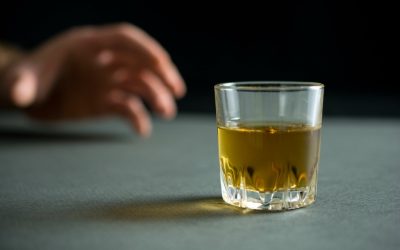More than one million people are treated for AUD in the USA every year and reducing each of their healthcare costs by this amount would produce an enormous aggregate economic saving (more than USD 10 billion in the US alone), as well as improving clinical outcomes. Despite the fairly large number of RCTs and quasi‐RCTs available, we included non‐randomized comparative designs in order to compare and contrast results from these studies with the more scientifically rigorous RCT designs. Also of note, one study with dual diagnosis participants in the Veterans Administration (VA) healthcare system (Lydecker 2010), found a disadvantage for PDA with AA/TSF. This may be because, although participants met criteria for AUD, the primary problem was mood disorder as opposed to AUD, which may represent a poorer fit with AA (Kelly 2003a).
- Meetings cost nothing to attend and are available almost everywhere.
- AA meetings are gatherings where recovery from alcoholism is discussed.
- However, most experts agree that attending more frequently—especially in the beginning—is more likely to lead to a successful recovery.
- In nine studies, we rated attrition bias as high risk because the studies had moderate (≥ 20%) attrition rates (8 studies), or there was a significant difference in attrition rates in the intervention groups (1 study).
- Outcomes are presented where possible for 12‐month follow‐ups,and key information concerning the certainty of evidence, the magnitude of effect of the interventions, and the sum of available data for the main outcomes is also shown.
- The results presented in this review are also supported by other published analyses.
Immediately after a relapse, you should contact your support network to assemble a game plan. If you do not have a network of supportive people, you should try to find one; fortunately, you have options. You may use AA, SMART Recovery, or other support groups to help you in this process. Alternatively, you may start to look into more formal treatment.
Bogenschutz 2014 published data only
These are referred to below in the Results section as Analysis 1.1, Analysis 2.3, and Analysis 6.3, and appear in the ‘Data and Analyses’ section tables as ‘Other Data’. The goal of TSF is to stimulate AA participation during and following treatment, but TSF itself is not AA. The alcoholics anonymous theoretical causal chain that may underlie the advantage of TSF clinical interventions is that AA/TSF leads to higher abstinence rates via its strong ability to get people with AUD involved in AA (Kelly 2009b; Kelly 2017a; Litt 2007; Longabaugh 1998; MATCH 2001; Walitzer 2009).
The GRADE certainty rating for this evidence was low; we downgraded due to study limitations and because a narrative synthesis was conducted and therefore estimates are not precise. The GRADE certainty rating for this evidence was moderate; we downgraded due to study https://ecosoberhouse.com/ imprecision. Nine studies, with 2818 participants, assessed this outcome (Davis 2002; Kelly 2017b; Litt 2007; Litt 2016; Lydecker 2010; MATCH 1997; McCrady 1996; Walitzer 2009; Walitzer 2015), but we were only able to meta‐analyze data from eight of them.
Contributions of authors
That said, a recent meta‐analysis by Tonigan 2018 found fairly consistent abstinence benefits from participation in AA by dually‐diagnosed individuals. Thus, it is currently not clear why the Lydecker 2010 study did not find benefits, but similar to the Kelly 2003a findings, it may relate to the specific treatment of severe major depression in particular, or perhaps idiosyncrasies related to military veterans, or being treated in the VA healthcare system. Within design types, studies varied in whether treatments were manualized or non‐manualized, and whether they compared AA/TSF to a different theoretical orientation (e.g. CBT), or to a different type of TSF (i.e. one that varied in TSF style or intensity).
- Three other studies also included economic analyses (classified as cost‐benefit studies; e.g. see Drummond 2005; Shemilt 2011a), making a total of four included economic studies reported across five included papers.
- Most studies were conducted in the USA, with one study from the UK (Manning 2012), and one from Norway (Vederhus 2014).
- It also contains stories written by the co-founders and stories from a wide range of members who have found recovery in A.A.
See Table 5 for a summary of the results for our main outcomes and certainty of evidence for each result. We included five studies reported in six papers in this category (Kahler 2004; Timko 2006; Timko 2011; Vederhus 2014; Walitzer 2009). See Table 3 for a summary of the results for our main outcomes and certainty of evidence for each result. We excluded one study (Davis 2002), and another study report examining end of treatment outcome (McCrady 1996), from the meta‐analysis because they reported the proportion of days of alcohol use and we were unable to calculate the standard deviation. However, we were able to include the two follow‐up reports at six and 18 months for McCrady 1996 (Analysis 1.2).
Alcoholic Relapse Defined
Membership is open to anyone who wants to do something about their drinking problem. A.A.’s program of recovery is built on the simple foundation of one alcoholic sharing with another. No longer is the topic of sobriety confined to discreet meetings in church halls over Styrofoam cups of lukewarm Maxwell House. For these New Abstainers, sobriety is a thing to be, yes, toasted over $15 artisanal mocktails at alcohol-free nights at chic bars around the country, or at “sober-curious” yoga retreats, or early-morning dance parties for those with no need to sleep off the previous night’s bender. AA is not allied with any sect, denomination, politics, organisation or institution; does not wish to engage in any controversy; neither endorses nor opposes any causes. Our primary purpose is to stay sober and help other alcoholics to achieve sobriety.
The 12‐step program is intended to facilitate the internal psychological, emotional, and spiritual changes deemed necessary to sustain abstinence and lead to enhanced psychological well‐being and improved relationships that can compete with the more immediate rewards provided by alcohol use (Alcoholics Anonymous 2001; Kelly 2013b). AA has an ostensibly ‘spiritual’ basis, which some members consider central to the program, and which may underlie the altruistic behavior that can help promote recovery (Zemore 2004). Yet many members do not consider the spiritual aspects of the program central (Alcoholics Anonymous 2018; Humphreys 2004). For drinking intensity, AA/TSF may perform as well as other clinical interventions at nine months, as measured by DDD (MD ‐1.76, 95% CI ‐2.23 to ‐1.29; 1 study, 93 participants; very low‐certainty evidence) and PDHD (MD 2.09, 95% CI ‐1.24 to 5.42; 1 study, 286 participants; low‐certainty evidence).
Schilling 2002 published data only
Since, at that time, there was a limited window for detecting alcohol use using breathalyzers and urinalysis bioassay, use of bioassays to corroborate self‐report was less common than it is now. Regardless, it is unlikely that any systematic bias would occur across comparison treatment interventions because all participants were subjected to the same procedures and protocols. Comparison interventions included other psychological clinical interventions (e.g. motivational enhancement therapy (MET), cognitive behavioral therapy (CBT), etc.), other 12‐step program variants (e.g. studies comparing different styles/intensities of 12‐step interventions), and no treatment (e.g. wait‐list control).












